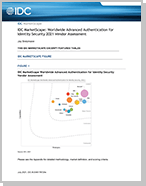The impact and the cost of cyber-attacks are increasing, especially for small and medium businesses, making the purchase of cyber insurance a necessity for reducing risk to organizations.
Multi-factor authentication (MFA) has now become a cyber-insurance requirement by most insurance agencies to qualify for coverage.
MFA Requirements for Cyber Insurance
When selecting the right MFA solution, consider a solution that:
- Offers a choice of authentication methods, including phishing resistant methods such as FIDO and PKI based MFA.
- Lowers overall implementation and running costs. Getting up and running quickly with MFA will ensure you can get your cyber-insurance policy renewed in time.
- Offers flexibility and scalability by integrating with on-prem and cloud apps.
Cyber Insurance Requirements Checklist
Besides the critical requirement to implement MFA, below is a checklist of additional measures organizations can take to meet requirements for cyber security coverage and reduce premium costs.
- Raise cybersecurity awareness through regular training
- Effectively manage third-parties and suppliers through regular security audits
- Encrypt your data everywhere
- Keep all your software and firmware updated
- Develop and test your incident response plan
- Undergo regular penetration testing
SafeNet Trusted Access: The Smart MFA Choice for Cyber Insurance
Thales’s SafeNet Trusted Access is an access management and authentication service. With its broad and powerful authentication capabilities, SafeNet Trusted Access meets the specific needs of diverse users by offering the right authentication method for the right user, and enabling organizations of all sizes to MFA requirements for cyber insurance.
Integrates with your environment SafeNet Trusted Access fits into IT environments smoothly and flexibly. Delivered in full SaaS or hybrid mode, it offers the benefits of modern, policy-based access with security by design. Automated workflows and user-initiated enrollment ensure remote support for thousands of users wherever they are, while diverse integration methods ensure you can protect any application – in the cloud, or on-premises.
Resources to Help You Address Cyber Insurance MFA Requirements



